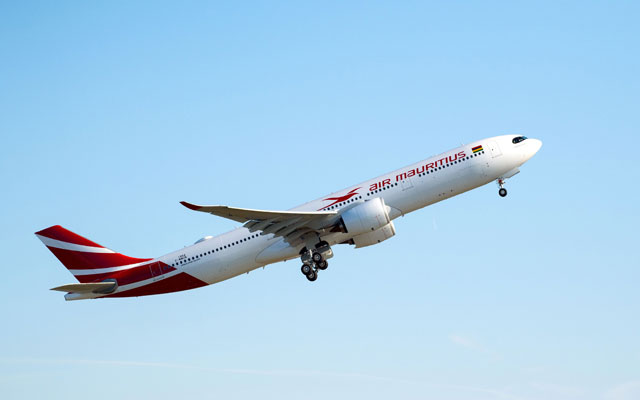The recent delivery of two Airbus A330-900neo aircraft in April this year, which makes Air Mauritius the first airline in the world to operate both the A350 XWB and A330neo, is putting the Indian Ocean carrier in a more favourable position to grow its global network strategy, particularly in Asia.
Featuring 288 seats in a two-class configuration with 28 full-flat business class and 260 economy class seats, the Airbus A330-900neo aircraft is currently deployed on its London, Paris, India and South-east Asia including Singapore routes, among others.

“The A330neo is a very fuel efficient aircraft, as compared to the A350 even and of course compared to the former version which is A340 or A330 classic,” said Somaskaran Appavou, CEO of Air Mauritius, speaking to TTG Asia during a recent interview in May.
Not only does the A330neo offer a “product alignment” for Air Mauritius’ fleet of Airbus planes, the Rolls-Royce Trent 7000 engine also gives the new model a lower fuel burn and greater fuel efficiency than previous versions to improve “economics” for the carrier too.
“In an environment where fuel makes up 30 per cent of total costs, having a lesser cost per seat helps the airline to be more competitive,” the airline chief remarked.
The addition of the two A330neos will therefore bring more flexibility and efficiency to the carrier’s operations.
“We have two smaller, single-lane A319s to be replaced at one point in time with either two potential types of aircraft – Boeing 737, not Max, or A321neo – with 168 and 170 seats based on our configuration. Instead of putting 300 seats three times a week, you could put 170 seats six or seven times a week, depending on the amount and cargo that we have, and then we can alternate between A321 and A330. So this is the plan for the coming years,” Appavou told TTG Asia.
“We want to fly more to China, Singapore and other parts of Asia. This is part of our Asian plans. Our ambition is to fly at least daily to Mumbai, daily to Singapore and daily to Shanghai within the next five years.”
Currently the Mauritian airline flies thrice-weekly to Singapore, with a fourth weekly service added during peak season. The service stops in Singapore before flying on to Kuala Lumpur, and back to Singapore on the return flight to Mauritius. “Maybe in the future we’d have a different pattern – we might fly to Singapore and Kuala Lumpur but dissociated, straight to both cities,” outlined Appavou.
Meanwhile, the Africa-Asia Air Corridor, which was launched in 2016 to connect both continents through the Singapore and Mauritius airports, remains a firm part Air Mauritius’ Asian strategy.
“Singapore is an island among people (population centres). We’re an island with fish living around,” Appavou mused. “Singapore is a good hub for us because we think Singapore can still capture a lot of Chinese transit traffic and then coming to Mauritius, and this traffic has to be built between flying direct or flying via through Singapore.”
Connecting flights through Singapore are mainly operated through codeshare partner Singapore Airlines, and Air Mauritius is now working on developing partnerships with Jetstar Asia and Scoot to stimulate more Asian traffic, shared Appavou.
Air Mauritius is also “seeking a good airline partner” in China, having started discussions with China Eastern Airlines. According to Appavou, the airline was seeing “growth and progression for the Chinese market” three years ago until the “eroding yuan and ongoing trade war” led to an erosion of Chinese traffic to Mauritius.
Small as the Indian Ocean carrier may be, it’s not letting up in its global ambitions. Appavou emphasised: “Mauritius existed as a naval hub (during the colonial era), but we now want to be an air hub.”




















